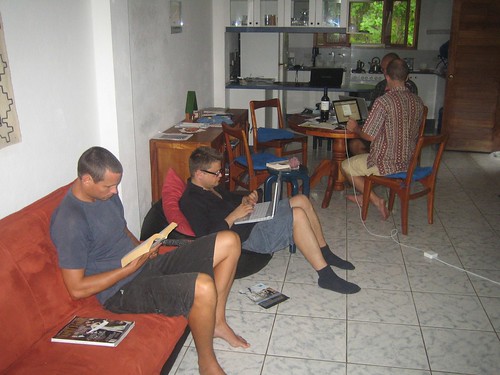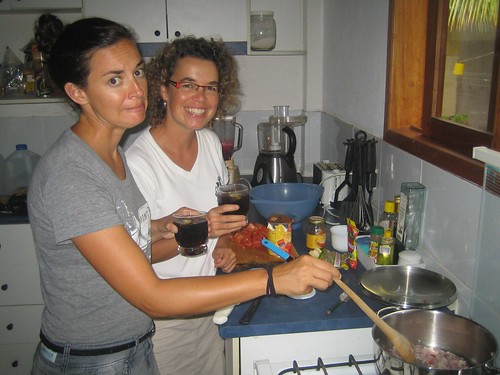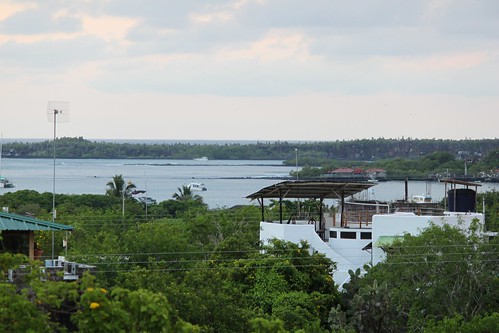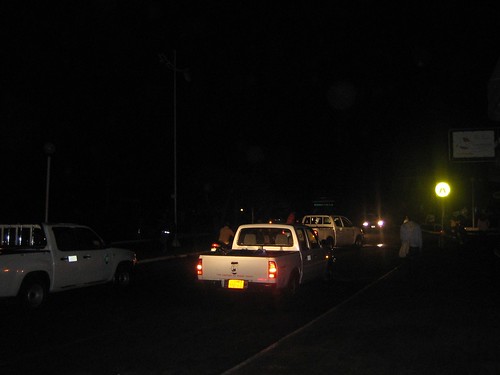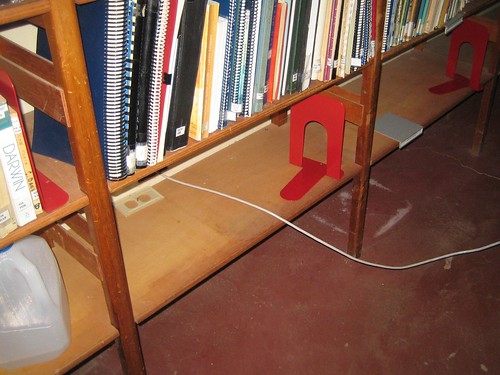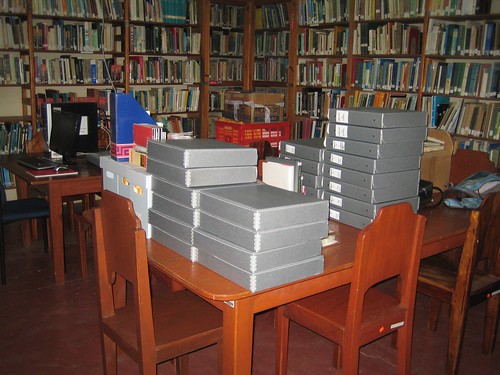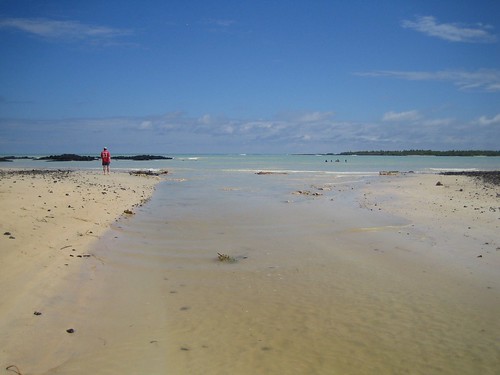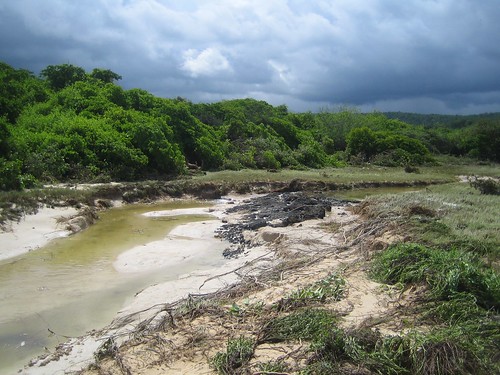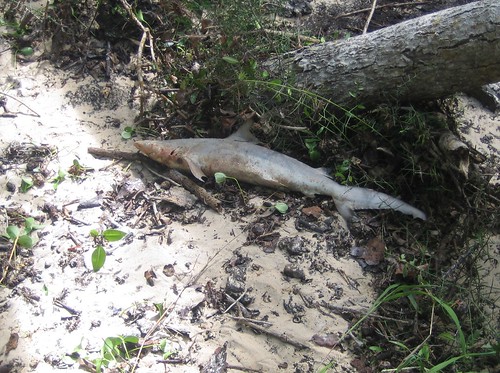Friday started like any other day. Roger got up first and made coffee.
When I came downstairs, he had already read about the earthquake in Japan and was on the phone with our neighbour who called from Quito to let us know the news.
At that point, we didn’t really understand that there was a risk for the Galapagos, so Peter (our friend who is visiting) left for a day trip to North Seymour Island, and I headed off to work a little while later. A few blocks from the house, I met Pete who had yet to be picked up by the tour company, and a woman from the research station who told me that the station was closed. President Correa had decreed that the coastal communities in Ecuador be evacuated to higher ground. For citizens of Puerto Ayora, this meant going to the town of Bellavista in the highlands. For Lonesome George and the baby tortoises, it meant a trip to Santa Rosa.
Thus began a day of waiting since the tsunami was not expected to reach the Galapagos until the evening. Since Roger and I live in a 2-storey house quite high up already, our place became the refuge for some folks who were staying at the station. Amazingly, the internet was fully functional, and at one point, we had four laptops, 1 Blackberry, 1 iPhone and 1 iPod touch all connected and checking for the updates. I was happy to learn that librarian colleagues who were gathered in Newport, Oregon for an annual meeting had moved to higher ground until the threat had passed.
In addition to following the news and checking in with family and friends through email and Facebook, we pretty much spent the day eating, drinking, talking and playing games. Based on the predictions of minimal wave heights in the Galapagos, we decided to remain at home in Puerto Ayora where we were comfortable and dry.
According to the Pacific Tsunami Warning Center web site, the first wave in the Galapagos (at Baltra Island) was predicted for 5:54pm. We climbed onto the roof and waited until the sun set but the ocean remained calm.
Just after going back inside, the power went out which meant no lights or water (since our water is on an electric pump). Luckily our group was well equipped with headlamps and lanterns, and Roger had collected rainwater which we could use for dishes and flushing toilets. [As it turned out, the power didn’t come back on until the following morning.]
It wasn’t until we walked down to Charles Darwin Avenue at about 7:30pm and saw debris on the road, that we realized that the first wave had arrived after dark. We met a police officer on a motorbike who told us that they were expecting another swell and that we should go home.
Later that night when we heard people returning from Bellavista, we ventured out again to inspect the damage. Buildings right on the waterfront including the Red Mangrove hotel, the Banco Pacifico, the Pro Insular (the big grocery store) and two beautiful galleries had their ground floors flooded. Other buildings just set a few feet higher were completely spared. The strangest thing was seeing this blue boat lying on the road. Without a motor, it was light enough to be carried by the wave.
The streets which had been dark and quiet were now busy again with taxis and buses returning people to their homes. My friend Luis who had returned to the station sent me a much appreciated text, “the library is fine”.
The next day, Pete and I walked out to the station so I could see the library for my own eyes and to turn on the air conditioner in the bodega which had turned off during the power outage. Roger and I had moved books and archival materials from the lowest shelves, hoping that an extra foot or two would make a difference. As it turned out, our efforts were thankfully unnecessary. The worst damage to the station was to the Biomarine Sciences building which is right at sea level.
Later that day, a few of us took a trip to Garrapatero which is a beautiful beach on the east side of Isla Santa Cruz. We were amazed to find that the waves had carved a channel, effectively splitting the beach in half, and creating a shallow creek between the ocean and the flamingo lagoon 200 metres inland.
Although it was mostly sand and rocks that had been moved by the waves, we did see little fish and this small shark in the mangrove forest. A strange site indeed.
Today we went to Tortuga Bay, and it looked like the waves had done no damage. I expect over the next few days, we will hear reports on how the animals fared throughout the islands. The sea turtles and the marine iguanas are nesting right now and may have been impacted by the tsunami.
For more photos, see: http://www.flickr.com/photos/sataylor/sets/72157626256319024/
Categories:
